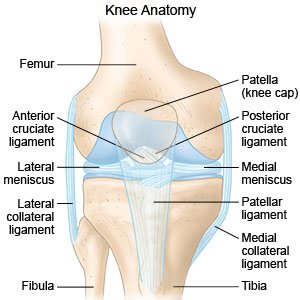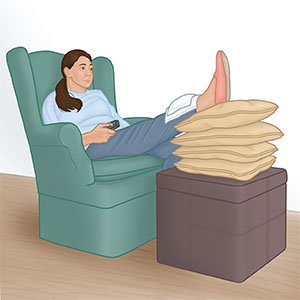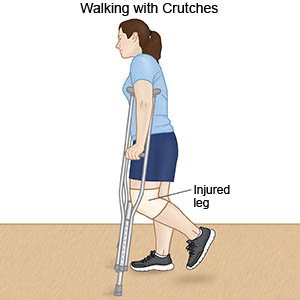Meniscectomy
Medically reviewed by Drugs.com. Last updated on Sep 23, 2025.
A meniscectomy is surgery to repair your meniscus, or remove any torn pieces. The meniscus is cartilage in your knee that acts like a shock absorber, and helps your knee move correctly.
 |
DISCHARGE INSTRUCTIONS:
Call your local emergency number (911 in the US) for any of the following:
- You feel lightheaded, short of breath, and have chest pain.
- You cough up blood.
- You fall and injure the knee that you had surgery on.
Seek care immediately if:
- Your foot or toes are swollen, cold, numb, or they turn white or blue.
- You lose feeling in your leg.
- Your stitches come apart.
Call your doctor or surgeon if:
- Your leg feels warm, tender, and painful. It may look swollen and red.
- Your incision areas are red, swollen, or draining pus.
- Blood soaks through your bandage.
- You have a fever or chills.
- You have more pain in your knee or trouble moving around.
- You have questions or concerns about your condition or care.
Medicines:
You may need any of the following:
- NSAIDs , such as ibuprofen, help decrease swelling, pain, and fever. NSAIDs can cause stomach bleeding or kidney problems in certain people. If you take blood thinner medicine, always ask your healthcare provider if NSAIDs are safe for you. Always read the medicine label and follow directions.
- Prescription pain medicine may be given. Ask your healthcare provider how to take this medicine safely. Some prescription pain medicines contain acetaminophen. Do not take other medicines that contain acetaminophen without talking to your healthcare provider. Too much acetaminophen may cause liver damage. Prescription pain medicine may cause constipation. Ask your healthcare provider how to prevent or treat constipation.
- Take your medicine as directed. Contact your healthcare provider if you think your medicine is not helping or if you have side effects. Tell your provider if you are allergic to any medicine. Keep a list of the medicines, vitamins, and herbs you take. Include the amounts, and when and why you take them. Bring the list or the pill bottles to follow-up visits. Carry your medicine list with you in case of an emergency.
Self-care:
- Apply ice on your knee for 15 to 20 minutes every hour or as directed. Use an ice pack, or put crushed ice in a plastic bag. Cover it with a towel. Ice helps prevent tissue damage and decreases swelling and pain.
- Elevate your knee above the level of your heart by resting it on pillows. Do not put a pillow directly under your knee. Place the pillow under your calf or ankle. This will help decrease swelling and pain. Prop your knee on pillows or blankets to keep it elevated comfortably.

Care for your incision area as directed:
When you are allowed to bathe, carefully wash the wound with soap and water. Dry the area and put on new, clean bandages as directed. Change your bandages when they get wet or dirty.
Go to physical therapy if directed:
A physical therapist teaches you exercises to help improve movement and strength, and to decrease pain.
Use support devices as directed:
- Brace or elastic wrap bandage:
- Check the skin around the brace or elastic wrap every day.
- Do not get the brace or elastic wrap wet. You may be able to remove the brace to shower. Cover the elastic wrap with 2 plastic bags. Tape the bags above the elastic wrap to prevent water from getting in. Keep your knee out of the water as much as possible.
- You can loosen or tighten the brace or elastic wrap bandage to make it comfortable. It should be tight enough for you to feel support. It should not be so tight that it causes your toes to tingle or lose feeling. If you are wearing an elastic wrap bandage, take it off and rewrap it once a day.
- Move your toes and foot several times an hour to prevent joint stiffness and blood clots.
- Crutches or a cane: Follow instructions about how much weight to put on your injured leg. Use these devices as directed.

Follow up with your doctor or surgeon as directed:
Write down your questions so you remember to ask them during your visits.
© Copyright Merative 2025 Information is for End User's use only and may not be sold, redistributed or otherwise used for commercial purposes.
The above information is an educational aid only. It is not intended as medical advice for individual conditions or treatments. Talk to your doctor, nurse or pharmacist before following any medical regimen to see if it is safe and effective for you.
Further information
Always consult your healthcare provider to ensure the information displayed on this page applies to your personal circumstances.
